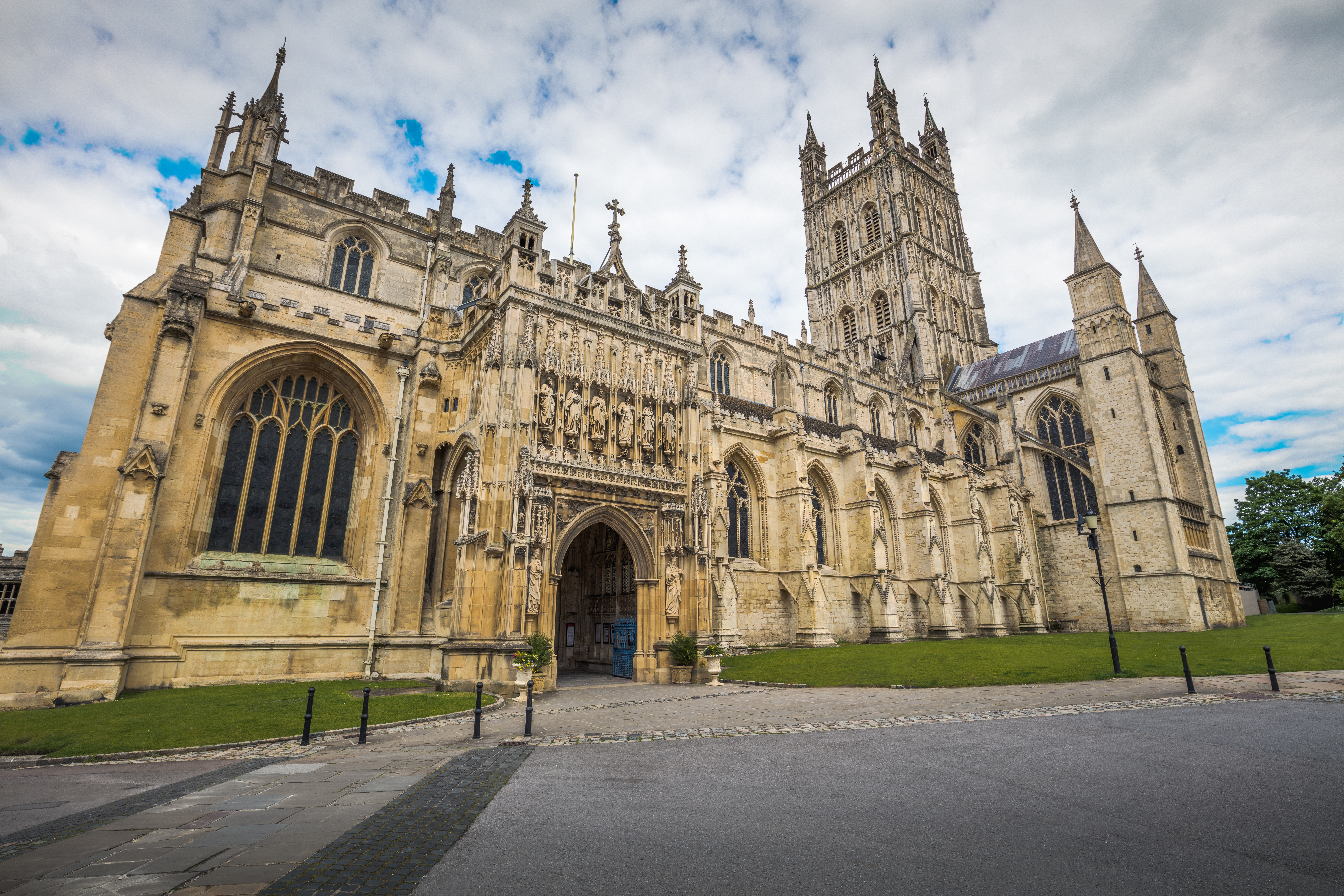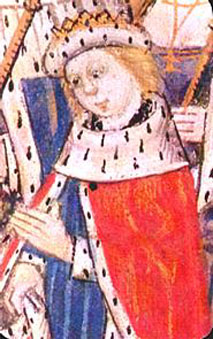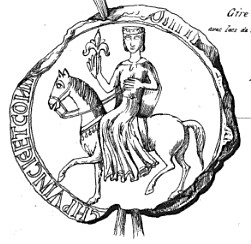|
Battle Of Evesham
The Battle of Evesham (4 August 1265) was one of the two main battles of 13th century England's Second Barons' War. It marked the defeat of Simon de Montfort, Earl of Leicester, and the rebellious barons by the future King Edward I, who led the forces of his father, King Henry III. It took place on 4 August 1265, near the town of Evesham, Worcestershire. With the Battle of Lewes, de Montfort had won control of royal government, but after the defection of several close allies and the escape from captivity of Prince Edward, he found himself on the defensive. Forced to engage the royalists at Evesham, he faced an army twice the size of his own. The battle soon turned into a massacre; de Montfort himself was killed and his body mutilated. It was described by the contemporary historian Robert of Gloucester as the "murder of Evesham, for battle it was none". Though the battle effectively restored royal authority, scattered resistance remained until the Dictum of Kenilworth was ... [...More Info...] [...Related Items...] OR: [Wikipedia] [Google] [Baidu] |
Second Barons' War
The Second Barons' War (1264–1267) was a civil war in Kingdom of England, England between the forces of barons led by Simon de Montfort, 6th Earl of Leicester, Simon de Montfort against the royalist forces of Henry III of England, King Henry III, led initially by the king himself and later by his son, the future King Edward I. The barons sought to force the king to rule with a council of barons, rather than through his favourites. The war also involved a series of massacres of Jews by de Montfort's supporters, including his sons Henry de Montfort, Henry and Simon de Montfort the Younger, Simon, in attacks aimed at seizing and destroying evidence of baronial debts. To bolster the initial success of his baronial regime, de Montfort sought to broaden the social foundations of parliament by extending the franchise to the commons for the first time. However, after a rule of just over a year, de Montfort was killed by forces loyal to the king at the Battle of Evesham. Causes The ... [...More Info...] [...Related Items...] OR: [Wikipedia] [Google] [Baidu] |
Battle Of Lewes
The Battle of Lewes was one of two main battles of the conflict known as the Second Barons' War. It took place at Lewes in Sussex, on 14 May 1264. It marked the high point of the career of Simon de Montfort, 6th Earl of Leicester, and made him the "uncrowned King of England". Henry III of England, Henry III's forces left the safety of Lewes Castle and St. Pancras Priory to engage the barons in battle and were initially successful, with Henry's son Edward I of England, Prince Edward routing part of the baronial army with a cavalry charge. However, Edward pursued his quarry off the battlefield and left Henry's men exposed. Henry was forced to launch an infantry attack up Offham Hill where he was defeated by the barons' men defending the summit. The royalists fled back to the castle and priory and the King was forced to sign the Mise of Lewes, ceding many of his powers to de Montfort. Background Henry III was an unpopular monarch due to his autocratic style, displays of favou ... [...More Info...] [...Related Items...] OR: [Wikipedia] [Google] [Baidu] |
Simon De Montfort The Younger
Simon VI de Montfort (April 1240 – 1271), known as Simon de Montfort the Younger, was the second son of Simon de Montfort, 6th Earl of Leicester and Eleanor of England. His father and his elder brother Henry were killed at the Battle of Evesham in August 1265. The younger Simon had been slow to bring his forces from London, and had seen them and their banners captured by Prince Edward, who then used the banners to trick Simon's father. He arrived at Evesham just in time to see his father's head atop a pike. The younger Simon tried to raise a rebellion in Lincolnshire, but this petered out by Christmas. In 1266, Simon and his supporters were now stuck in Kenilworth Castle, which was previously owned by his father. Having promised to surrender the castle to King Henry III of England, Simon later changed his mind and so the King decided to besiege the castle on 21 June. The Siege of Kenilworth lasted six months, making it one of the longest sieges ever conducted in the Briti ... [...More Info...] [...Related Items...] OR: [Wikipedia] [Google] [Baidu] |
Gloucester
Gloucester ( ) is a cathedral city, non-metropolitan district and the county town of Gloucestershire in the South West England, South West of England. Gloucester lies on the River Severn, between the Cotswolds to the east and the Forest of Dean to the west; it is sited from Monmouth, from Bristol, and east of the England and Wales border, border with Wales. Gloucester has a population of around 132,000, including suburban areas. It is a port, linked via the Gloucester and Sharpness Canal to the Severn Estuary. Gloucester was founded by the Roman Empire, Romans and became an important city and ''Colonia (Roman), colony'' in AD 97, under Nerva, Emperor Nerva as ''Glevum, Colonia Glevum Nervensis''. It was granted its first charter in 1155 by Henry II of England, Henry II. In 1216, Henry III of England, Henry III, aged only nine years, was crowned with a gilded iron ring in the Chapter House of Gloucester Cathedral. Gloucester's significance in the Middle Ages is unde ... [...More Info...] [...Related Items...] OR: [Wikipedia] [Google] [Baidu] |
Prince Of Wales
Prince of Wales (, ; ) is a title traditionally given to the male heir apparent to the History of the English monarchy, English, and later, the British throne. The title originated with the Welsh rulers of Kingdom of Gwynedd, Gwynedd who, from the late 12th century, used it (albeit inconsistently) to assert their supremacy over the other Welsh rulers. However, to mark the finalisation of his conquest of Wales, in 1301, Edward I of England invested his son Edward of Caernarfon with the title, thereby beginning the tradition of giving the title to the heir apparent when he was the monarch's son or grandson. The title was later claimed by the leader of a Welsh Revolt, Welsh rebellion, Owain Glyndŵr, from 1400 until 1415. King Charles III created his son William, Prince of Wales, William Prince of Wales on 9 September 2022, the day after his accession to the throne, with formal letters patent issued on 13 February 2023. The title has become a point of controversy in Wales. Welsh ... [...More Info...] [...Related Items...] OR: [Wikipedia] [Google] [Baidu] |
Llywelyn Ap Gruffudd
Llywelyn ap Gruffudd ( – 11 December 1282), also known as Llywelyn II and Llywelyn the Last (), was List of rulers of Gwynedd, Prince of Gwynedd, and later was recognised as the Prince of Wales (; ) from 1258 until his death at Cilmeri in 1282. Llywelyn was the son of Gruffudd ap Llywelyn ap Iorwerth and grandson of Llywelyn ab Iorwerth (also known as Llywelyn the Great, or Llywelyn I), and he was one of the last native and independent princes of Wales before its Conquest of Wales by Edward I, conquest by Edward I of England and English rule in Wales that followed, until Owain Glyndŵr held the title during his Glyndŵr rebellion, rebellion of 1400–1415. Genealogy and early life Llywelyn was the second of the four sons of Gruffudd ap Llywelyn ap Iorwerth, the eldest son of Llywelyn ab Iorwerth, and Senana ferch Caradog, the daughter of Caradoc ap Thomas ap Rhodri, Lord of Anglesey. The eldest was Owain Goch ap Gruffudd and there were two younger brothers, Dafydd ap Gruffy ... [...More Info...] [...Related Items...] OR: [Wikipedia] [Google] [Baidu] |
Welsh Marches
The Welsh Marches () is an imprecisely defined area along the border between England and Wales in the United Kingdom. The precise meaning of the term has varied at different periods. The English term Welsh March (in Medieval Latin ''Marchia Walliae'') was originally used in the Middle Ages to denote the marches between England and the Principality of Wales, in which Marcher lords had specific rights, exercised to some extent independently of the king of England. In modern usage, "the Marches" is often used to describe those English counties which lie along the border with Wales, particularly Shropshire and Herefordshire, and sometimes adjoining areas of Wales. However, at one time the Marches included all of the historic counties of Cheshire, Shropshire, Herefordshire, Worcestershire and Gloucestershire. Etymology The term ''March'' is from the 13th-century Middle English ''marche'' ("border region, frontier"). The term was borrowed from Old French ''marche'' ("limit, bo ... [...More Info...] [...Related Items...] OR: [Wikipedia] [Google] [Baidu] |
Tower Of London
The Tower of London, officially His Majesty's Royal Palace and Fortress of the Tower of London, is a historic citadel and castle on the north bank of the River Thames in central London, England. It lies within the London Borough of Tower Hamlets, which is separated from the eastern edge of the square mile of the City of London by the open space known as Tower Hill. It was founded toward the end of 1066 as part of the Norman Conquest. The White Tower (Tower of London), White Tower, which gives the entire castle its name, was built by William the Conqueror in 1078 and was initially a resented symbol of oppression, inflicted upon London by the new Normans, Norman ruling class. The castle was also used as a prison from 1100 (Ranulf Flambard, Bishop of Durham) until 1952 (the Kray twins), although that was not its primary purpose. A grand palace early in its history, it served as a royal residence. As a whole, the Tower is a complex of several buildings set within two concentric ring ... [...More Info...] [...Related Items...] OR: [Wikipedia] [Google] [Baidu] |
Earl Of Derby
Earl of Derby ( ) is a title in the Peerage of England. The title was first adopted by Robert de Ferrers, 1st Earl of Derby, under a creation of 1139. It continued with the Ferrers family until the 6th Earl forfeited his property toward the end of the reign of Henry III and died in 1279. Most of the Ferrers property and (by a creation in 1337) the Derby title were then held by the family of Henry III. The title merged in the Crown upon Henry IV's accession to the throne in 1399. The title was created again, this time for the Stanley family, in 1485. Lord Derby's subsidiary titles are Baron Stanley of Bickerstaffe in the County Palatine of Lancaster (created 1832), and Baron Stanley of Preston in the County Palatine of Lancaster (1886). The courtesy title of the heir apparent is Lord Stanley. The 1st to 5th Earls also held an earlier Barony of Stanley, created for the 1st Earl's father in 1456 and currently abeyant; the 2nd to 5th Earls held the Barony of Strange created i ... [...More Info...] [...Related Items...] OR: [Wikipedia] [Google] [Baidu] |
Robert De Ferrers, 6th Earl Of Derby
Robert de Ferrers, 6th Earl of Derby (1239–1279) was an English nobleman. He was born at Tutbury Castle in Staffordshire, England, the son of William de Ferrers, 5th Earl of Derby, by his second wife Margaret de Quincy (born 1218), a daughter of Roger de Quincy, 2nd Earl of Winchester and Helen of Galloway. Early years In 1249, at the age of 10, he married the seven-year-old Mary (or Marie), daughter of Hugh XI of Lusignan Count of La Marche, the eldest of Henry III's half-brothers, at Westminster Abbey. This arranged marriage is an indication of Henry's high regard for Robert's father. William died in 1254, so Robert became a knight and inherited the title while he was still a minor. He and his estates became a ward of Prince Edward. In 1257, Edward sold the wardship to the queen and Peter of Savoy for 6000 marks, which might have been a source of the later antipathy of Ferrers for the prince. Inheritance Robert came of age in 1260 and took possession of the vast e ... [...More Info...] [...Related Items...] OR: [Wikipedia] [Google] [Baidu] |
Richard, 1st Earl Of Cornwall
Richard (5 January 1209 – 2 April 1272) was an English prince who was King of the Romans from 1257 until his death in 1272. He was the second son of John, King of England, and Isabella, Countess of Angoulême. Richard was nominal Count of Poitou from 1225 to 1243, and he also held the title Earl of Cornwall from 1225. He was one of the wealthiest men in Europe and joined the Barons' Crusade, where he achieved success as a negotiator for the release of prisoners and assisted with the building of the citadel in Ascalon. Biography Early life He was born 5 January 1209 at Winchester Castle, the second son of John, King of England, and Isabella, Countess of Angoulême. He was made High Sheriff of Berkshire at age eight, was styled Count of Poitou from 1225 and in the same year, at the age of sixteen, his brother King Henry III gave him Cornwall as a birthday present, making him High Sheriff of Cornwall. Richard's revenues from Cornwall helped make him one of the wealthiest me ... [...More Info...] [...Related Items...] OR: [Wikipedia] [Google] [Baidu] |
Kingdom Of England
The Kingdom of England was a sovereign state on the island of Great Britain from the late 9th century, when it was unified from various Heptarchy, Anglo-Saxon kingdoms, until 1 May 1707, when it united with Kingdom of Scotland, Scotland to form the Kingdom of Great Britain, which would later become the United Kingdom. The Kingdom of England was among the most powerful states in Europe during the Middle Ages, medieval and Early modern period, early modern periods. Beginning in the year 886 Alfred the Great reoccupied London from the Danish Vikings and after this event he declared himself King of the Anglo-Saxons, until his death in 899. During the course of the early tenth century, the various Anglo-Saxons, Anglo-Saxon kingdoms were united by Alfred's descendants Edward the Elder (reigned 899–924) and Æthelstan (reigned 924–939) to form the Kingdom of the English. In 927, Æthelstan conquered the last remaining Viking kingdom, Scandinavian York, York, making him the first ... [...More Info...] [...Related Items...] OR: [Wikipedia] [Google] [Baidu] |







